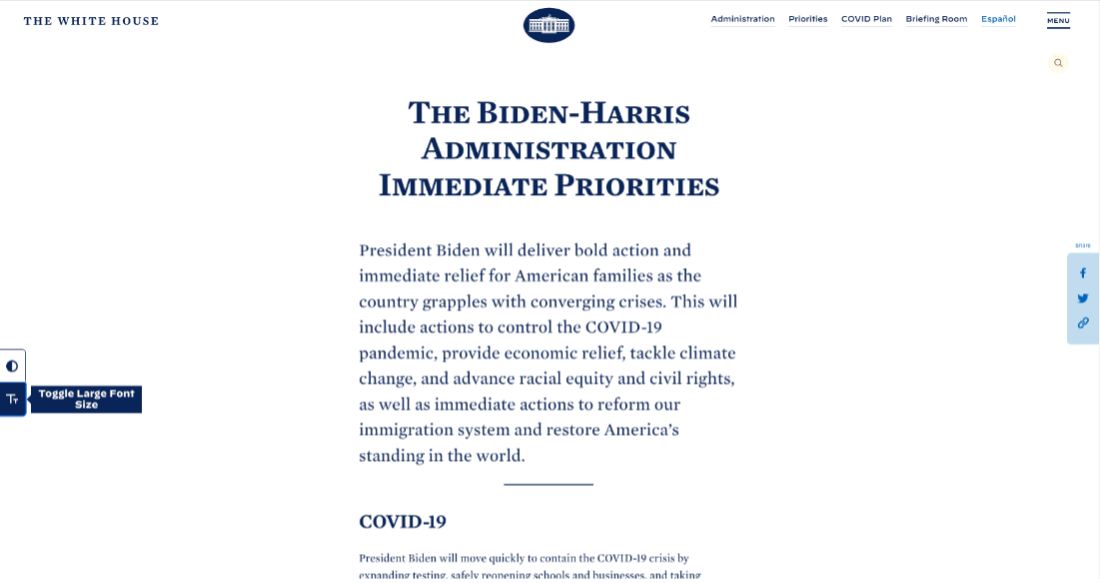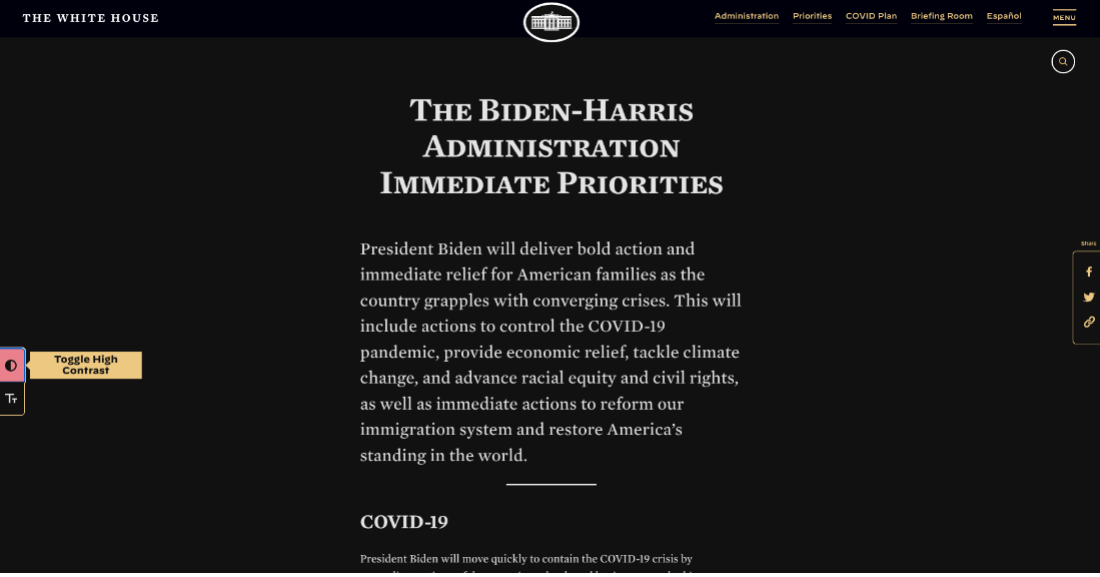The Americans with Disabilities Act (ADA) and Section 508 of the Rehabilitation Act of 1973 are civil rights laws protecting those with divergent abilities. We’ll cover what these laws are and examples for accessibility and language access.
What is the ADA and Section 508?
The ADA is a civil rights law that prohibits discrimination against people with disabilities. The law, which President George H.W. Bush signed in 1990, provides guidelines for how organizations must communicate with those who have disabilities and covers several areas including:
- Employment (Title I)
- Public entities and transportation (Title II)
- Public accommodations and commercial facilities (Title III)
- Communication (Title IV)
- Other provisions (Title V)
Section 508 of the Rehabilitation Act of 1973 requires that Federal agencies make electronic and information technology accessible to those with disabilities. It further elaborates on the need for specific regulations to guide federal agency staff who play a role in IT accessibility.
What is 508
“requires access to electronic and information technology provided by the Federal government… Federal agencies must ensure that this technology is accessible to employees and members of the public with disabilities to the extent it does not pose an “undue burden.” Section 508 speaks to various means for disseminating information, including computers, software, and electronic office equipment. It applies to, but is not solely focused on, Federal pages on the Internet or the World Wide Web.” Source
What’s the Difference Between ADA and Section 508?
While there’s clear crossover between the two, as ADA requires accommodations in physical spaces, digital media, websites, and more, Section 508 specifically lays out regulations in the areas of: policy & management, acquisition, content creation, design & develop, testing, and training tools & events. Organizations who need to follow a stricter guideline like Section 508 can do so following exactly defined areas.
What Do You Need to Follow?
If you need specific help identifying regulations within your organization, your HR department should assist. It may mean looking at your communications and how they relate to language access – English or other languages, large print, contrasted colors, captions, braille, reader-friendly screen, and more. Here are some examples of what organizations need to follow.
- Title II of the ADA pertains to state and local governments. They must include Section 508 for communications, meaning accessible websites such as large or contrasting print, readers, alt text, captions, transcripts, and more.
- Title III covers public places and businesses. They don’t necessarily require Section 508 but do require “integrated” settings and accommodation unless the accommodation would cause an “undue burden.”
- Title II and Title III require effective communication for those with disabilities, which includes the right to accessible exams and courses, accessibility to lodging, service animals, accessible ticketing, wheelchairs, accessibility in prisons, accessible parking, and more.
- Section 508 applies to Federal agencies. Many non-Federal organizations choose to follow it to reach the intended audiences.
Reactive and Proactive Approaches to Accessibility and Language Access
Many organizations still take a reactive approach when it comes to accessibility and translations. Being reactive means not providing language or accessibility support and including a statement (or not) that a person can request this support. Proactive means making an effort before the request to provide accessibility. For example:
- Web accessibility – including the statement on your website about accessibility, but not having the accessibility standards implemented, any idea of what they are, a dedicated place on the website to request accommodation, or a dedicated person to take those requests.
- Language services are generally required once the “threshold” languages are passed, at which point many simply provide a statement to request accessibility when needed.
Here’s an example of a website that’s reactive and one that’s proactive.
Reactive aPPROACH
This website has a page that talks about accessibility assistance and provides an email address where you can reach out for help. However, the webpage isn’t translated, there aren’t links to high contrast or large text, and there’s no apparent screen reader assistant or alt text.

PROACTIVE APPROACH
Whitehouse.gov is a good example of a proactive (and required) website:
- The use of plain space is good for those who may have trouble reading due to divergent abilities.
- The average reading literacy in the US for an adult is equivalent to a 12-14 year old. This site adheres to plain language, which is a style of writing that enables your audience to understand the content the first time they read it.
- It has a Spanish version of the website, La Casa Blanca. Two completely separate to support the 43 million+ Spanish-speaking people in the US.
- On the back end, the website coding has been created to support screen readers.
- It proactively addresses accessibility: it has an accessibility link in the footer that leads to an accessibility statement with phone numbers to call if needed.

- Every page includes high-contrast and large text options.
Conclusion
The ADA and Section 508 were created to assist those with disabilities and cover a wide range of requirements.
Accessibility and Website Localization Services at Avantpage
We provide accessibility and website localization services to help organizations be proactive and compliant. For example, we helped a California health plan provider localize their website into their threshold languages and ensure compliance with California government code section 508 and WCAG accessibility standards. Read more about it.
Our accessibility services include providing a thorough report on areas that aren’t meeting compliance as well as fully or partially implementing our findings. In addition, we can provide website localization into more than 150 languages. For more information, contact us at [email protected] or (530) 750-2040.




